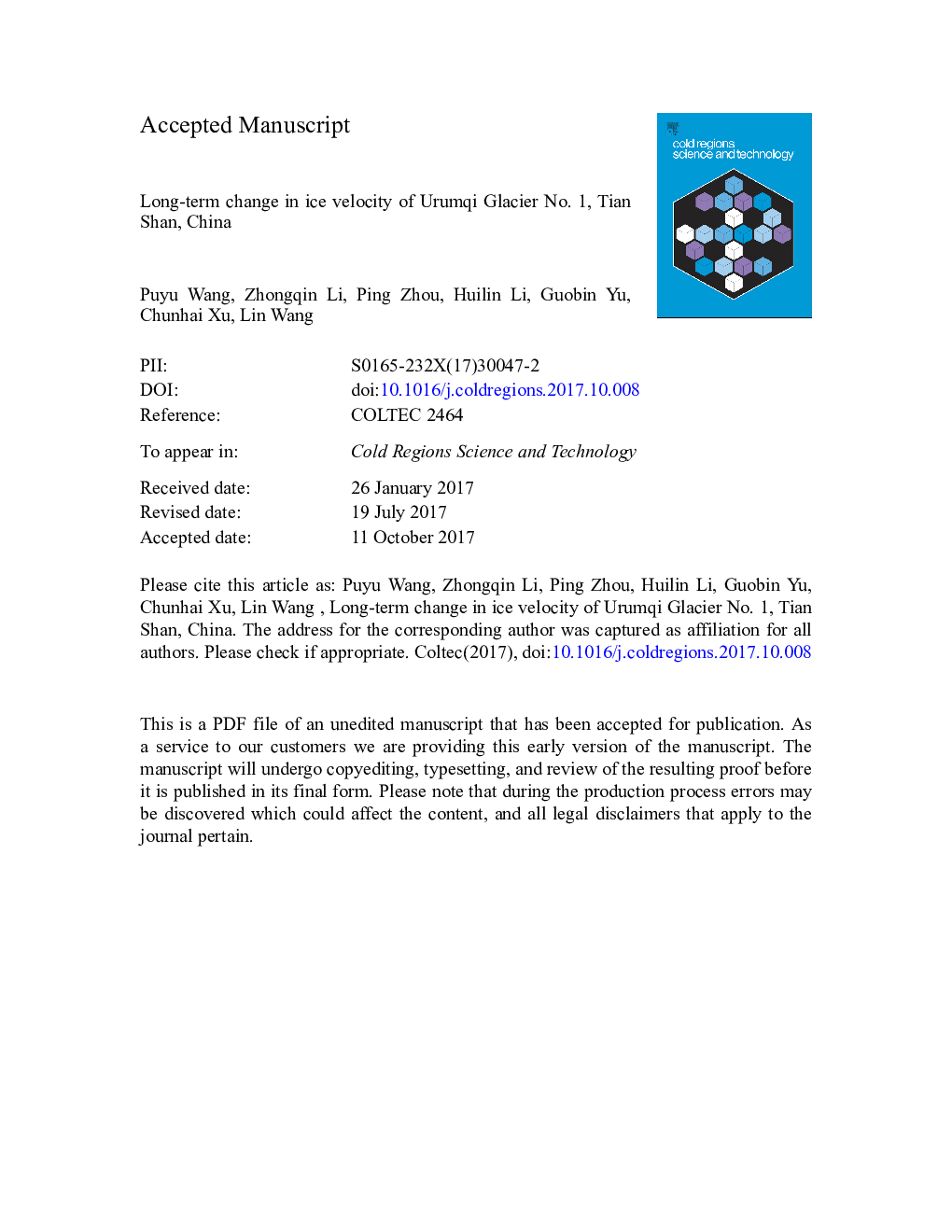| Article ID | Journal | Published Year | Pages | File Type |
|---|---|---|---|---|
| 8906615 | Cold Regions Science and Technology | 2018 | 19 Pages |
Abstract
Glacier flow velocity of Urumqi Glacier No. 1 has been continuously measured at the end of every summer since 1980. The observation results show that the average surface velocity was 5.5 m aâ 1, 4.6 m aâ 1, 3.8 m aâ 1, and 3.3 m aâ 1 in 1980/1981, 1990/1991, 2000/2001, and 2010/2011, respectively. The annual average velocity was reduced by 1.3% aâ 1 from 1980/1981 to 2011/2012. The climate change is the essential cause for long term velocity change because continuous mass loss or gain will result in ice thickness decrease or increase. A suddenly sharp change in the mass balance could lead to a short change in velocity. Long term change in the velocity can be analyzed by glacial dynamic model. Using the simplified equations, analysis of the surface velocity along the centerline shows that influence of the ice thickness change is most important and could be modeled well. The velocity is very sensitive to the surface slope change but the validity of its effect modeling is relatively low due to the large spatial variability of surface slope. Under the combination effect of decrease in both ice thickness and surface slope, the velocity of the West Branch has a relative large decrease. The calculated decrease in surface velocity along the centerline is 3.8 m aâ 1 from 1981 to 2012, relatively close to the value of 3.6 m aâ 1 from observation. Increase in surface slope of the East Branch has an offsetting effect on ice thickness decrease. To further analysis, besides more data, a better model is needed to describe physical and dynamic processes.
Related Topics
Physical Sciences and Engineering
Earth and Planetary Sciences
Earth and Planetary Sciences (General)
Authors
Puyu Wang, Zhongqin Li, Ping Zhou, Huilin Li, Guobin Yu, Chunhai Xu, Lin Wang,
